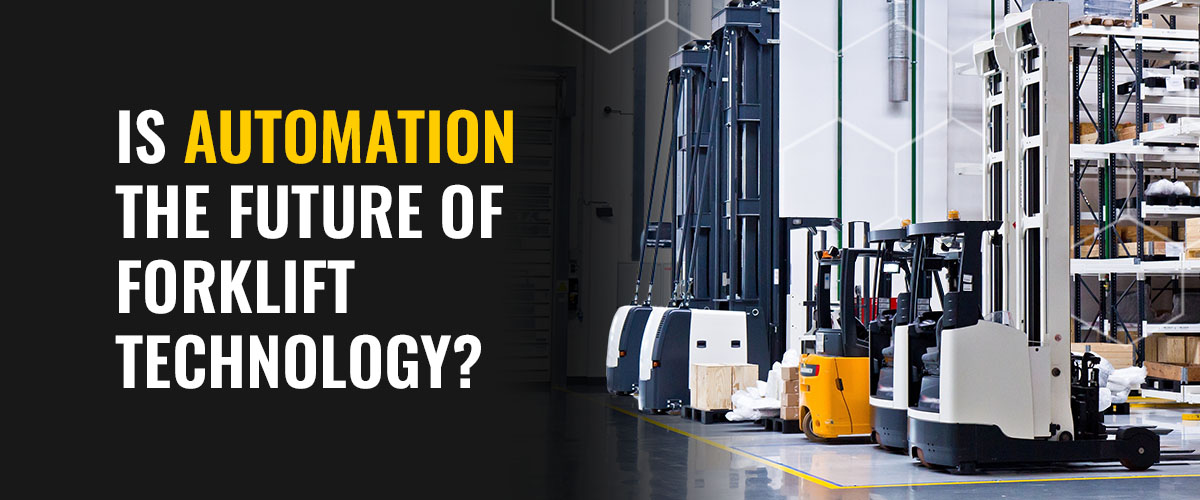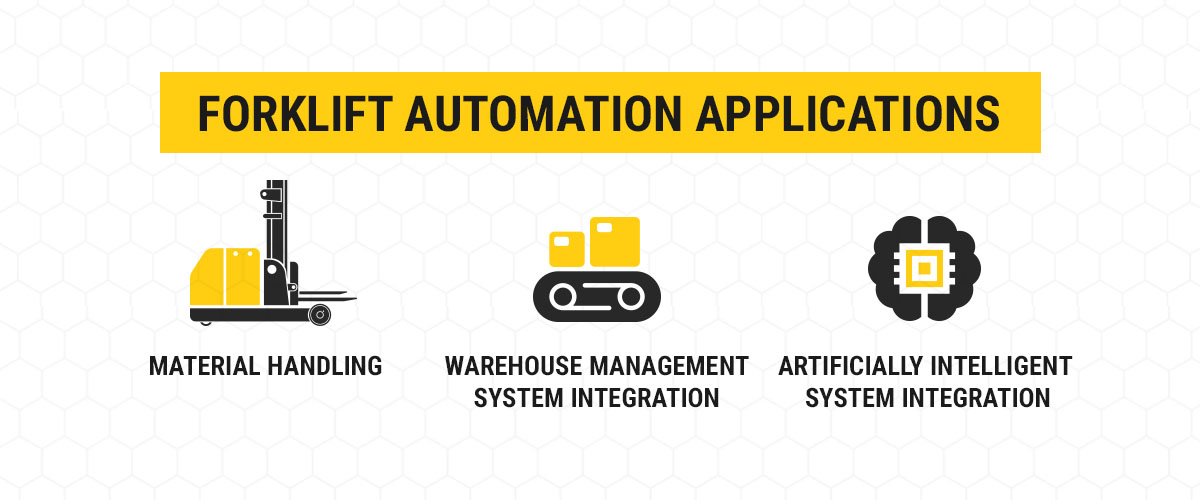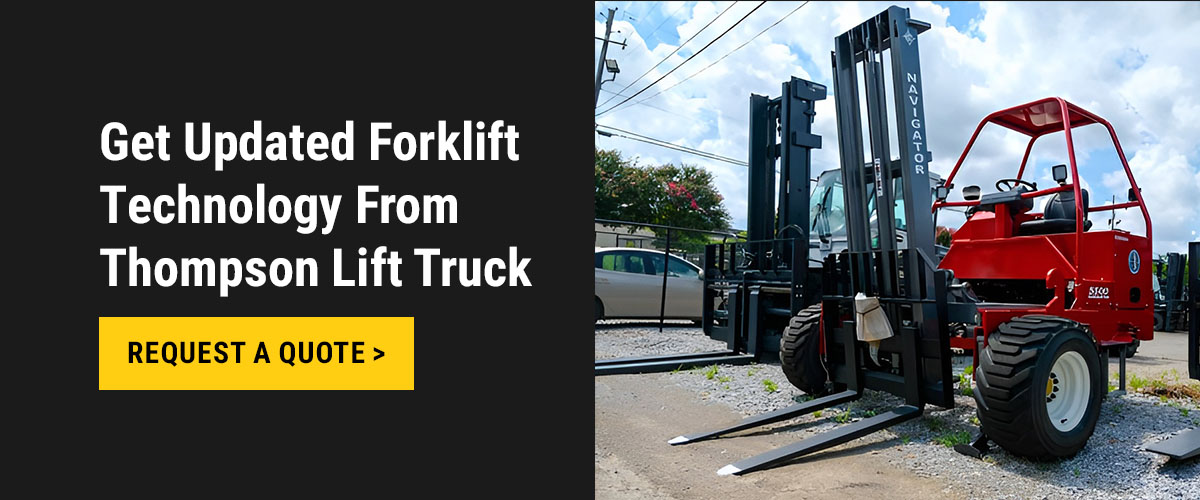
Is Automation the Future of Forklift Technology?
Over the past several years, forklift automation has gained traction, focusing on safety innovations, workplace efficiencies, and other business benefits. For those involved in construction, warehousing, and other fields where forklifts are necessary, exploring and implementing these innovative techniques may help improve bottom lines while reducing safety risks. With so many possibilities, automatic forklift technology is well on its way to being the next big thing.
Benefits of Automated Forklift Technology
Automated forklift technology has some considerable benefits, including:
- Improved productivity and efficiency through driverless forklift truck steering and functioning.
- Reduced workplace accidents as a result of decreased risk of human error.
- Optimized warehouse floor space.
- Improved inventory management.
Recent Forklift Technology Innovations for Safety and More
In a variety of ways, forklift technology has evolved across industries, providing users with comprehensive safety features and other beneficial aspects. Some of the ways forklift technology has changed include:
1. Operator-Assist Systems
With this innovative system, an operator controls the forklift with the help of sensors, alarms, and cameras that assist in maneuvering the forklift.
Detection sensors and cameras alert the driver when their path is obstructed, while speed sensors automatically slow the forklift when approaching busy intersections. Operators are trained on all safety aspects to ensure full comprehension of the lift’s capabilities and features.
Additionally, the forklift’s ergonomic design ensures operators are comfortable while driving to reduce fatigue.
2. Electric-Powered Forklifts
In these forklifts, the electric-powered counterpart has been modified to improve energy efficiency while operating quietly. This equipment is environmentally sustainable due to decreased emissions, helping businesses reduce their carbon footprints.
3. Accident Avoidance Systems
A pivotal innovation in forklift safety is accident avoidance systems. They are designed to specifically detect people and objects through specialized sensors. When something is in close proximity to the forklift, a warning alarm will sound. Some forklift models include an automatic brake feature that stops in time in case the driver cannot.
4. Stability Control and Load-Leveling System Incorporation
A stability control system ensures the forklift won’t tip over while carrying loads by adjusting its weight. Load-leveling helps balance loads automatically through improved hydraulic systems. This forklift safety technology helps ensure operator and pedestrian protection.
5. Improved Power Sources and Lighting Systems
Power sources have been optimized to run longer, charge faster, and require less maintenance. The replacement of lead-acid batteries with lithium-ion batteries is the innovation behind this. Moreover, improved lighting technology assists in navigating warehouses at night. Light sensors and brighter lights help illuminate dark areas for improved visibility and safety.
6. Telematic System Integration
Telematic systems incorporate GPS, onboard diagnostics, and other wireless transmitting systems like tracking devices to remotely track a forklift’s performance and collect relevant data. This helps monitor efficiency and maintenance requirements, contributing to a safe and functional forklift.
Forklift Automation Applications
Forklift automation is used in various applications, including some of the following:
- Material handling: Autonomous forklifts can increase the capability of handling materials, which can reduce your bottom line.
- Warehouse management system integration: Compatibility with management systems promotes easier order processing, tracking inventory, and stock-taking.
- Artificially intelligent system integration: Integrating artificial intelligence (AI) systems enhances operator safety, productivity, and performance, as it helps detect fatigue and eliminate distractions.
Why the Demand for Forklift Automation?
The increasing benefits of forklift automation are pushing employers to consider acquiring them for their inventory. This growing interest stems from the following:
- Automated machines are less likely to make errors. They are capable of handling material effortlessly while posing no risk to humans, so the risk of human injury drastically declines.
- Automated forklifts can operate around the clock, improving efficiency and service delivery.
- Proper fleet and inventory management is easier through automation.
- Labor costs are reduced and operators are absorbed into other business areas where they are needed.
- Programmable forklifts follow input commands precisely.
- Data analysis promotes preventative maintenance through telematic system integration, saving on long-term costs.
Challenges and Considerations of Forklift Automation
While the benefits are plentiful, there are a few challenges and considerations of forklift automation to keep in mind.
- Flexibility: Automated forklifts cannot adapt to quick, sudden changes in the environment. That’s why it’s still essential to employ human workers in your warehouse or on your job site.
- High initial investment: The initial cost to purchase an automated forklift or fleet of lifts is high, but the return on your investment is higher.
- Training: Specialized training is necessary to upskill all operators and staff to ensure optimal safety. Additional training is required for software and system-related operations.
- Job security concerns: Operators may question their role in being replaced by automated forklifts. A contingency plan must be in place to reassure them of their job security.
Future Trends and Developments
Automation promotes forklift independence and self-sustainability, an intriguing prospect for many. With continuous technological advancements, future trends and developments are in discussion. Consider these:
- The automated guided vehicle (AGV) market is anticipated to reach over $3 billion by 2027. This growth indicates the lucrative nature of AGVs in business.
- With advanced AI, forklifts may eventually be programmed to make autonomous decisions, improving performance and impacting the bottom line.
- Consistent drives for innovation through active collaboration between forklift manufacturers and automation companies.
- Internet of Things integration of online data sharing between devices like sensors, cameras, Bluetooth, and trackers helps provide real-time feedback on forklift operations. This provides the opportunity to implement immediate changes.
- Machine learning capabilities are advancing, further promoting the integration of AI forklift systems for complete independence.
Get Updated Forklift Technology From Thompson Lift Truck
Thompson Lift Truck has forklift inventory for every application, boasting new options and material-handling equipment rentals specific to your needs. From single internal combustion forklifts to entire truck-mounted forklift fleets, we can help you locate machinery that helps you get the job done.
Considering the technological advances of forklift automation, the benefits of renting or purchasing forklifts for your business are significant. Trust Thompson Truck Lift to provide the forklift you need for your business needs. Call us at 883-937-3682 to discuss your requirements, order parts, or request a service, or get a quote from us today.



